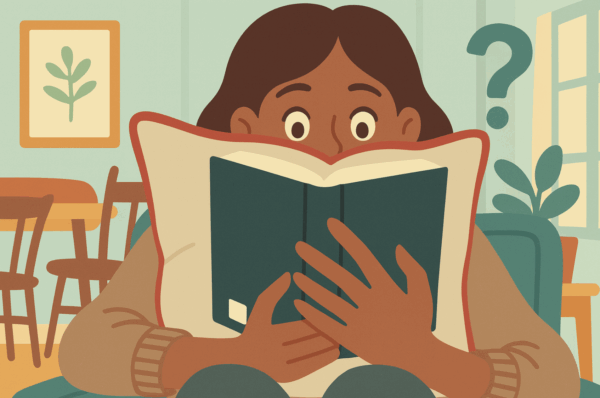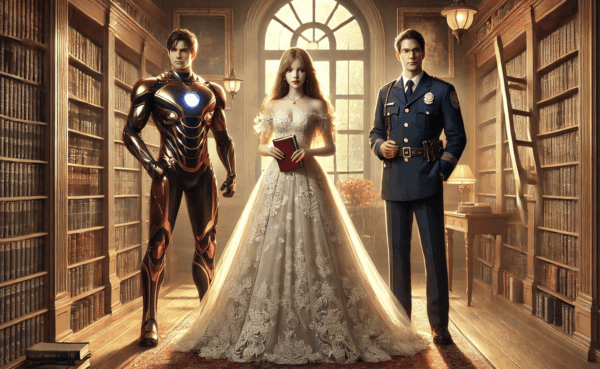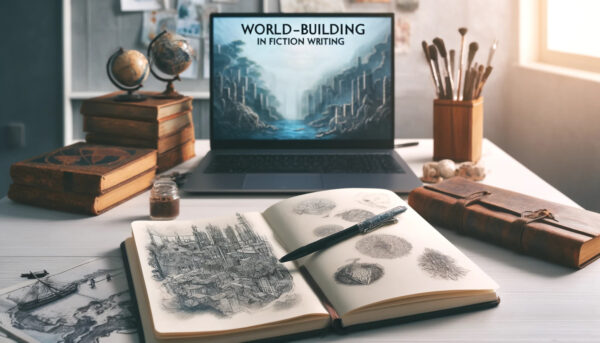Ever notice how every great story seems to have a dramatic turning point? It’s that moment when everything shifts, when characters grow, or when the plot takes an unexpected turn. That, my friend, is the magic of an “arc.” Let’s see how the arc meaning can influence your writing and create a new opportunity for your story.
An arc is the journey—the rise, fall, and often rise again—that drives a story forward and gives it shape. Whether it’s the progression of a character, the evolution of a plot, or the redemption of a seemingly hopeless villain, arcs are the backbone of compelling narratives. Without them, stories would be like flat soda—lacking fizz, excitement, and any real punch.
In this article, we’ll unravel the mystery of arcs, from story arcs that shape the overall plot to character arcs that transform protagonists (or villains). We’ll dive into redemption arcs—those tear-jerking, hope-filled journeys—and villain arcs that make you question everything you thought you knew about good and evil. Ready for some storytelling magic?
What Is Arc Meaning Anyway?
So, what exactly is an “arc” in storytelling? At its core, an arc is the trajectory or path a story follows, showing how events and characters evolve from start to finish. Think of it as the skeleton of a story, with each key event acting as a bone that shapes the structure. In the context of narratives, an arc helps provide direction and purpose, creating a satisfying emotional and intellectual journey for the audience.
Now, let’s zoom in on the “story arc.” A story arc refers to the overall structure of a plot from beginning to middle to end. It’s the journey the main narrative takes, where the protagonist faces challenges, confronts obstacles, and ultimately experiences some form of change or resolution. It’s the blueprint that guides the plot through a series of highs and lows—essentially, the ups and downs that make us gasp, laugh, and cry. Imagine The Lord of the Rings—the story arc tracks the journey from humble beginnings in the Shire, through the intense struggles, and to the ultimate victory (after a lot of walking).
But arcs aren’t limited to the story alone. You’ve got character arcs, where a character undergoes a transformation throughout the story. There’s also the redemption arc, where a flawed or villainous character seeks redemption, and the villain arc, which charts the evolution of the antagonist. Each of these adds depth and richness to the narrative, offering different layers of conflict, growth, and resolution. In the next sections, we’ll explore these arcs in more detail.
Story Arc Meaning: The Backbone of Every Plot
At the heart of every captivating narrative lies the story arc—the blueprint that gives structure and direction to the plot. In simple terms, a story arc is the sequence of events that propels the plot from the opening scene all the way to its conclusion. It’s the way the narrative unfolds, taking readers or viewers on a journey that builds tension, peaks in drama, and resolves in a satisfying way. A story arc is often broken down into three key parts: the beginning, middle, and end. This classic three-act structure is the foundation of storytelling that ensures the plot doesn’t feel aimless or chaotic.
Story Arc Structure
- The Beginning (Act One): This is where the world is introduced, along with the main characters, their goals, and the central conflict. The protagonist faces an initial problem that kicks off the story.
- The Middle (Act Two): The protagonist struggles, faces setbacks, and experiences growth. The stakes rise as challenges intensify, leading to the climax—the turning point where everything changes.
- The End (Act Three): The conflict reaches its peak, and the story resolves. The protagonist confronts their biggest challenge, and the story arcs towards closure, whether it’s a victory, defeat, or bittersweet resolution.
To see this structure in action, look no further than The Lord of the Rings. In the beginning, Frodo is tasked with destroying the One Ring. The middle is packed with trials, temptations, and betrayals as Frodo and his companions face relentless challenges. The story culminates in the epic final confrontation with Sauron. Similarly, Harry Potter and the Sorcerer’s Stone follows a similar pattern: the first act introduces Harry’s world, the second act builds up challenges at Hogwarts, and the final act sees Harry battling Voldemort in a showdown that resolves the central conflict.
Tips for Crafting a Strong Story Arc:
- Start with a Clear Conflict: Make sure the stakes are high from the get-go. Whether it’s saving the world or solving a mystery, the conflict should drive the plot forward.
- Build Tension Gradually: Use the middle of your story to escalate the conflict. Introduce obstacles that make the protagonist question their ability to succeed.
- Deliver a Satisfying Climax: The climax should be the emotional and action-packed highlight of the story—everything the narrative has been building toward.
- Provide a Resolution: Ensure the conclusion answers any lingering questions and resolves the major conflicts, offering closure for your characters and readers alike.
A well-crafted story arc is what keeps your audience hooked and eager to see how the plot unfolds. Whether you’re plotting an epic fantasy or a small personal drama, the arc ensures your story is both engaging and meaningful.
Character Arc Meaning: From Zero to Hero (or Villain)
A character arc is the transformation or inner journey of a character over the course of a story. It’s how they change—whether it’s emotionally, mentally, or morally—as they face challenges, make choices, and confront their flaws. A well-executed character arc is often the backbone of a compelling narrative because it gives the audience someone to root for, fear, or even pity as they evolve (or devolve) throughout the plot.
Character arcs are essential for creating dynamic, engaging stories. Without an arc, characters can feel flat or static—making the entire narrative feel incomplete. The beauty of a character arc lies in its ability to tie the protagonist’s (or antagonist’s) evolution to the core themes of the story, making their personal growth (or decline) resonate with the audience.
Types of Character Arcs:
- Positive Character Arc: This is the classic “hero’s journey” arc, where the character starts off with weaknesses, doubts, or limitations and grows into someone stronger, wiser, or more heroic. Think of Harry Potter—at the start, he’s a young, inexperienced boy with no idea of his magical destiny. By the end of the series, Harry has faced incredible challenges, made tough decisions, and learned the true meaning of courage and sacrifice. His arc transforms him from a reluctant hero into someone who embraces his role in the fight against evil.
- Negative Character Arc: Not all characters are meant to become better people—some fall from grace. This arc charts a character’s descent into villainy, moral corruption, or self-destruction. A prime example of this is Walter White from Breaking Bad. Walter begins as a mild-mannered chemistry teacher who turns to cooking meth to provide for his family. However, as his power and pride grow, so does his descent into darkness. His transformation from “Mr. Chips to Scarface” is a fascinating and tragic negative arc, showing how even a sympathetic character can become unrecognizable.
Examples of Character Arcs:
- Positive Arc Example: Katniss Everdeen from The Hunger Games is another example of a character arc that starts from survival and ends in leadership. Initially, she fights only for herself and her family’s survival, but by the end, she becomes a symbol of revolution and hope for an entire oppressed nation. Her arc is powerful because it reflects both personal growth and societal change.
- Negative Arc Example: Anakin Skywalker from Star Wars is a tragic example of a negative character arc. Anakin starts as a hopeful, skilled Jedi but gradually succumbs to fear, anger, and the lure of the dark side, ultimately becoming Darth Vader. His arc highlights how internal struggles and external influences can pull someone away from their true self.
Both of these arcs demonstrate how character evolution, whether positive or negative, shapes the story and adds depth to the narrative. Whether it’s watching a hero grow or a villain fall, character arcs are essential for crafting emotionally resonant stories.
Try a Writing Coach?
Writing a compelling character arc is a skill that many writers struggle with, but it’s also an essential part of the storytelling process. A book writing coach can help you navigate the complexities of crafting these transformative journeys for your characters. They can guide you through the process of building arcs that resonate deeply with your readers, whether you’re shaping a hero’s growth, a villain’s fall, or a redemption journey. Working with a coach ensures that each character’s evolution is meaningful, consistent, and tied to the larger themes of your story, elevating the emotional impact of your narrative.
Just like any other aspect of writing, mastering character arcs takes practice and dedication. A book writing coach can provide personalized feedback, brainstorming sessions, and actionable advice that helps you strengthen your arcs, refine character motivations, and ensure that every change feels earned. Whether you’re looking to fine-tune a positive, negative, or redemption arc, their expertise will help you craft a narrative that keeps your readers invested from beginning to end.
If you’re ready to elevate your writing, working with a coach can offer the insight and support you need to take your character arcs—and your entire story—to the next level.
Redemption Arc Meaning: Rising from the Ashes
A redemption arc is one of the most emotionally compelling storylines in literature and film. It’s the journey of a character who starts off deeply flawed, morally compromised, or downright villainous, but through a series of events, the character is redeemed. This type of arc is powerful because it speaks to the fundamental human desire for second chances, personal growth, and the hope that people can change for the better.
The core of a redemption arc lies in the character’s transformation. They start at rock bottom—maybe as a villain or someone who has made terrible mistakes—but by the end of the story, they’ve earned forgiveness or, at the very least, come to terms with their actions. What makes this arc so riveting is that it’s not about the characters becoming perfect; rather, it’s about them learning from their past, grappling with guilt, and striving to make amends.
Why It’s Popular
Audiences love redemption arcs because they offer emotional satisfaction and hope. There’s something inherently uplifting about watching a character rise from their mistakes or sins, especially when that journey is hard-earned. It taps into our universal desire for forgiveness and change, both for others and for ourselves. It’s the ultimate proof that no one is beyond redemption and that growth is always possible, no matter how dire the circumstances.
Examples
- Darth Vader (Star Wars): One of the most iconic redemption arcs in pop culture, Darth Vader’s journey from the dark side of the Force to redemption is a classic tale of a fallen hero. Despite all his monstrous actions, his final act of saving his son, Luke Skywalker, shows that even the darkest of characters can find a glimmer of light. Vader’s arc resonates because it’s about love, sacrifice, and the belief that people can always choose to change.
- Jaime Lannister (Game of Thrones): Jaime’s redemption arc is far more gradual but just as compelling. Initially viewed as a ruthless, arrogant villain, Jaime slowly becomes more empathetic, especially after his forced captivity and relationship with Brienne of Tarth. His arc demonstrates that redemption doesn’t come easily—it requires vulnerability, personal struggle, and self-reflection.
Crafting a Redemption Arc
- Start with a Flawed Character: A character with a dark past or deeply flawed nature makes the redemption arc even more satisfying. Let their mistakes and flaws be clear early on.
- Make the Journey Challenging: Redemption doesn’t come without effort. Make sure the character faces obstacles—internal and external—that make their journey difficult and earned.
- Let the Change Be Gradual: A redemption arc feels more authentic when the character’s change is slow and gradual. Show small, incremental moments where they demonstrate growth.
- Don’t Force It: Avoid making the redemption feel too easy or rushed. The character should truly struggle with their past actions and their desire to change.
A well-crafted redemption arc not only makes a story emotionally rich but also leaves the audience believing in the possibility of change, both for fictional characters and real people.

Villain Arc Meaning: When Bad is Just as Good
A villain arc is a fascinating, often underrated storytelling device that tracks the evolution of an antagonist—showing how they go from being a clear enemy to a more complex, multifaceted character. What makes the villain arc meaning different from a character arc meaning is that the focus is on a villain’s journey, often exploring their motivations, inner conflicts, and the circumstances that led them to make morally questionable (or downright evil) choices. While a character arc typically shows growth or redemption, a villain arc delves into the deeper layers of a villain’s psyche, making them more than just a one-dimensional antagonist.
Why Villain Arcs Work
Villain arcs challenge the audience’s black-and-white understanding of good and evil. They show that villains aren’t just “bad for the sake of being bad”—they often have complex motives or backstories that make their actions more understandable, even if not justifiable. This nuanced portrayal allows viewers to relate to the villain, sparking empathy or at least sympathy. A good villain arc can blur the lines between heroism and villainy, forcing the audience to question their own moral boundaries and beliefs.
When done well, a villain arc makes the antagonist more memorable, elevating the entire narrative. Instead of just being someone to defeat, the villain becomes an integral part of the story, providing depth and thematic weight.
Examples
- Thanos (Avengers: Infinity War): Thanos is a villain whose motivations go beyond mere greed or hatred. In Infinity War, he genuinely believes that wiping out half of the universe will restore balance and prevent its collapse. His villain arc isn’t about power for power’s sake—it’s driven by a twisted form of utilitarianism. This makes him both terrifying and oddly sympathetic, adding complexity to his character.
- Magneto (X-Men): Magneto’s arc is one of the most compelling villain arcs in comic book history. His transformation from a Holocaust survivor seeking to protect mutants to an extremist bent on domination is fueled by personal trauma, loss, and the fear of being oppressed. His motivations—though extreme—stem from a place of vulnerability and a desire for justice, which makes his character far more relatable.
How to Write a Strong Villain Arc
- Give Them a Strong Motivation: A villain with a clear and personal reason for their actions is much more interesting than one who’s evil for no reason. Whether it’s revenge, power, or a misguided desire to “save the world,” make sure their motivations are rooted in their past experiences.
- Make Them Sympathetic: The best villains are the ones you almost root for. Allow their humanity to shine through, even if it’s buried under layers of anger, fear, or obsession.
- Avoid Over-Simplification: Villains who are “bad just because” don’t leave a lasting impact. Instead, show the complexity of their decisions, making them question their own choices throughout the arc.
- Include a Downfall or Moment of Self-Awareness: A strong villain arc often features a point of reflection—either where the villain realizes the cost of their actions or doubles down on their dark path. Either way, this moment of clarity adds emotional depth to their journey.
A well-crafted villain arc not only enhances the antagonist’s role but also enriches the entire story. By showing that even the “bad guys” have depth, writers can create more thought-provoking, morally complex narratives that challenge the audience’s perceptions of good and evil.
Arc in Books: The Literary Journey
The concept of an “arc” is just as vital in books as it is in film and television. In literature, an arc helps structure a novel, guiding the progression of the plot, the development of characters, and the thematic exploration. Whether it’s a classic, modern, or genre-specific novel, arcs are used to ensure that the narrative feels purposeful and engaging, with characters that grow or evolve through their experiences.
For instance, in The Great Gatsby, the character arc of Nick Carraway reveals his disillusionment with the American Dream, making his emotional journey central to the story. Similarly, Les Misérables features a powerful redemption arc, as Jean Valjean transforms from a hardened criminal into a compassionate man, illustrating the themes of forgiveness and moral redemption.
Arcs are essential in literature because they provide both structure and emotional depth. They allow characters to undergo meaningful change, whether it’s growth, decline, or redemption, ensuring that the story feels dynamic and rewarding. A well-developed arc gives readers a deeper connection to the narrative, encouraging reflection on the characters’ journeys and the lessons they impart. In short, an arc brings a sense of purpose to a story, leaving a lasting impact on readers long after they turn the final page.
Conclusion: Every Great Story Needs an Arc
In the world of storytelling, arcs are more than just plot devices—they are the foundation upon which great stories are built. Whether it’s the sweeping journey of a story arc, the emotional growth of a character arc, the redemption of a flawed individual, or the complex transformation of a villain, arcs provide the structure and depth that keep readers hooked. Understanding the different types of arcs helps writers create more dynamic, compelling narratives that resonate with audiences.
As a writer, consider how you can apply this arc meaning to your own work. What kind of transformation will your protagonist undergo? How will your antagonist challenge your hero’s journey? Whether you’re working on a novel, a short story, or even a screenplay, a well-crafted arc is essential for creating a story that feels both satisfying and meaningful.
So, take a moment to analyze the arcs in your favorite books, movies, or shows. What makes them work? Then, think about how you can develop even more complex arcs in your own writing. Remember, every great story needs an arc—it’s the key to crafting a narrative that’s both memorable and impactful. Happy writing!
Looking for more tips on storytelling and writing? Join us at Spines for expert advice, resources, and inspiration to take your craft to the next level!
FAQs – Arc Meaning
Q1: What is a person’s arc?
A person’s arc refers to the personal growth or change that a character (or even a real person) undergoes over time. In storytelling, it typically refers to the transformation a character experiences throughout a narrative—whether it’s emotional, moral, or psychological growth. It’s the journey from who they were at the start of the story to who they become by the end.
Q2: Can a story have multiple arcs?
Yes, a story can absolutely have multiple arcs! In fact, many complex stories feature several arcs, such as the main story arc, character arcs for multiple protagonists or antagonists, and even subplots with their own smaller arcs. These multiple arcs often intersect and enhance one another, creating a richer and more layered narrative. For example, while the main story arc follows a hero’s journey, secondary arcs might focus on supporting characters or a subplot that ties into the overall theme.
Q3: Why do they call it a character arc?
It’s called a character arc because it specifically focuses on the trajectory or evolution of a character. The term “arc” here reflects the way the character’s personality, beliefs, and actions evolve over the course of a story, much like an arc in a graph. It shows how the character changes as they encounter challenges, make decisions, and face consequences.
Q4: How does a redemption arc differ from a character arc?
A redemption arc is a specific type of character arc where a character begins with significant flaws, mistakes, or moral failings and undergoes a transformation toward redemption. The focus is on their effort to atone for their wrongdoings or overcome their past actions. While a general character arc might involve any type of change, growth, or evolution, a redemption arc is centered around the idea of forgiveness, moral growth, and seeking to become a better person, often after a period of darkness or wrongdoing.
Q5: What is the arc of love?
The arc of love refers to the progression of a romantic relationship in a story. It usually begins with the characters meeting or falling in love, followed by obstacles or conflicts that challenge their bond, and then often ends with resolution or fulfillment—whether it’s the characters overcoming their struggles or finding a way to be together. The arc represents the emotional highs and lows of love and how the relationship evolves.
Q6: What does main arc mean?
The main arc refers to the central storyline or the primary arc in a narrative. It’s the key plot or character development thread that drives the overall story forward. While there may be subplots or secondary arcs, the main arc is the one that is most prominent and most directly tied to the protagonist’s journey, shaping the narrative’s structure and emotional impact.








